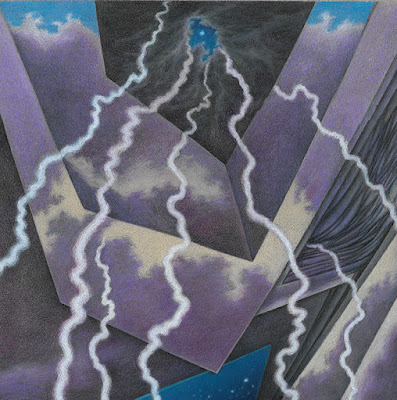Saturday, August 22, 2020
Focused Seeing
At the end of last semester, when so many of us finished the
school year on zoom, almost everyone commented on how exhausting it was, myself
included. But it wasn’t clear to me why. It is only now, facing a full semester
on-line, that I discovered one reason was I was thinking about what I liked
about zoom teaching. Faces. When I reflect on what about my classes changed
mid-semester, one surprise was how my image of each student changed. Instead of
the figure hunched over the drawing in the corner I saw a face full of light
and curiosity.
Faces are such an intense source of information that there
is a whole part of the brain dedicated to them, the fusiform gyrus, a bulge of
brain with two aspects, a part that reads the expressions and finds them even
where there isn’t a face, and a part that recognizes faces we’ve seen before.
Paul Ekman estimates that we can discern over 3000 different facial
expressions. This is a scope of understanding we may not appreciate but is in
active use in a zoom one to one.
The limitations of on-line teaching are opportunities to focus
on what we may not have otherwise. One-on-one in person doesn’t mean the other
looks at you. But on-line, the other has to look at the screen to see what’s
going on, and we get a chance to appreciate the extensive information in a face. The memories I have of each individual
are always the face on the screen. This isn’t just because they’re the most
recent, but also because looking at their faces showed so much more of their
person than shy or anxious body language might allow. With some I felt like I’d
never seen their faces before, and others seemed so much more relaxed in their
own spaces, less exposed and self-conscious. So much of the role being played
in the social world, the outer shell of identity, slid away. One-on-one is a
very concentrated experience but it feels like it’s training something good, a
greater awareness of the person beneath the surface, the individual human behind
the labels. Like when I first got caught by tennis when I chanced on Bjorn Borg’s
face on the screen, it feels like a privilege to witness something more real,
connected to the pulse of being and not the shell.
Maybe with on-line teaching we lose something in group
dynamics, but with in-person group dynamics certain personalities assert
themselves and others try to disappear. The screen has an equalizing effect.
Everybody is the same size tile or the whole screen, group or absolute
individual. The more I reflect on it, the more the opportunities multiply.
Subscribe to:
Comments (Atom)
